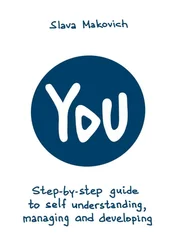An additional consideration is this: If an atypical biological process or physical health condition underlies asexuality, does this mean that asexuality is a disorder? For example, there is some evidence that health issues and atypical prenatal development may underlie the development of asexuality in some people (Bogaert, 2004). This research is important when we consider the origins of asexuality (see chapter 13), but, for two reasons, it should not guide our thinking on whether asexuality is a disorder. First, it is unlikely that physical health issues and atypical prenatal development underlie all instances of asexuality (Bogaert, 2004). Thus, even if many asexual people do have health issues (and/or atypical prenatal development), we cannot use this evidence to conclude that all asexual people are disordered or that asexuality per se is pathological. Second, using atypical sexual development as an indicator of a current mental health problem is a dubious approach. If so, we should also pathologize gays and lesbians as having a (current) mental disorder, as atypical prenatal development probably underlies, at least to some degree, the development of same-sex attraction (LeVay, 2010). If so, perhaps we should diagnose individuals with great musical talent as having a disorder, for atypical prenatal development (e.g., exposure to high prenatal hormones) may predispose one to having this talent (Manning, 2002). It is important, then, not to confuse the cause of a human psychological variation with a determination of whether that variation is currently construable as a mental illness.
It is also notable that the historical record does not show consistent evidence of asexuality as pathology; indeed, the opposite may be the case. For example, a lack of sexuality has been not seen as a disorder throughout the much of the history of Western medicine (Sigusch, 1998). Even today, some religions and cultures would not pathologize an absence of sexuality; instead, a lack of sexuality (or at least abstinence) is often considered a virtue. Thus, an absence of sexuality has not been considered a disorder consistently across time or across current cultural contexts.
Another issue relates to stigmatization. When we label someone as having a disorder, we often stigmatize them, and stigmatization itself can be a source of distress and mental health concerns. After all, who would not be stressed by being labeled “disordered”? The impact of stigmatization has been raised in the context of other sexual minorities (e.g., gays and lesbians) (Meyer, 2003). In short, why go down the road of labeling something as a disorder when there is evidence that it is not a disorder, and when we know that such labels themselves have negative consequences?
Aside from these arguments against pathologizing asexuality, there is lab research on arousal that may support the idea that asexuality is not a disorder. As mentioned in chapter 6, research has demonstrated that asexual women, like sexual women, show non-category-specific responding to sexual stimuli; that is, asexual women show some level of genital arousal to both male- and female-oriented sexual stimuli, very similar to heterosexual women and lesbians (Brotto & Yule, 2011). Thus asexual women do not show low arousal (i.e., abnormally low vaginal responses) to sexual activity, as women diagnosed as “dysfunctional” often do. [35] Whether someone with low arousal should be construed as having a disorder (especially if he or she has no distress about it) is, of course, another issue to consider.
Indeed, the authors of the study argue that this work gives additional support to the idea that asexuality is a sexual orientation, like being gay or straight, because asexual women respond physically in ways that are very similar to their (non-dysfunctional) homosexual and heterosexual counterparts.
Let’s return to the issue of distress, but from the flip side. There are often hidden benefits to asexuality that need to be considered when making a final determination about the question of whether asexuality is a sexual “disorder.” In fact, psychologists Nicole Prause and Cynthia Graham found that asexuals report significant advantages to their asexuality. The top four were as follows: (1) avoiding the common problems of intimate relationships, (2) decreasing risks to physical health or unwanted pregnancy, (3) experiencing less social pressure to find suitable partners, and (4) having more free time (Prause & Graham, 2007, p. 351). Perhaps we can add to these the issue raised in chapter 8: Asexuality avoids the madness of sex . Let’s call these point the big five benefits of asexuality.
At this point, you may be thinking: Yes, the author is right that these arguments show that asexuality is not necessarily a disorder. And yet, if you are a sexual person, you may also have a vague notion, a feeling you can’t shake, that regardless of these arguments, asexual people still must be missing something . After all, doesn’t (partnered) sex entail a special passion, excitement, and thrill, which asexuals must be missing out on?
Maybe. But who am I to say—and who are you to say—what passion is right for a given individual? Have you ever skydived before? Of course, most people haven’t and have no interest in it. I have, and for me, it was a thrill. But do those who have not had, and do not want to have, this experience have a disorder? So, if you don’t want this experience, should we diagnose you with, say, hypoactive skydiving disorder because you eschew this thrilling life activity?
I was recently invited to give a talk on asexuality to the Society for Sex Therapy and Research, or SSTAR. (Such organizations often try to find a catchy acronym to make their group memorable. I like theirs: “STAR” with a stutter.) SSTAR is the main conference for the world’s sex therapists. Attendees come from a variety of backgrounds, including medicine, psychology, and social work, and all are trained (or in training) to help people with sexual problems.
Frankly, I was nervous to give a talk to SSTAR. Although trained in sexology, I’m an academic, and like most academics, my work primarily relates to teaching and research. Thus, unlike SSTAR members, I am not a sex therapist or even a clinician. These folks work in the trenches, even if those trenches sometimes lie on (or near) Madison Avenue and can be mined for gold. Thus, I did not know if I was a lone sheep set loose among two hundred battle-ready and hungry (clinical) wolves.
Another reason I was nervous was because a past surgeon general of the United States was in attendance. She was in one of the front rows looking at me, and I was looking at her.
However, the most important reason I felt nervous was because I was arguing that asexuality should not (necessarily) be construed as a disorder. Years before, I had gotten into fights—no, not fistfights—with some clinicians who I felt were putting inappropriate pressure on some asexuals to become sexual beings. Moreover, the majority of the attendees at SSTAR have spent their professional careers trying to increase (healthy) sexual behavior in their clients. Thus, I felt that they, like the few clinicians I had interacted with, would consider asexuality a disorder that needs fixing. So, my expectation was that I would be either coolly received or hotly dismissed.
In my talk—a bit shakily delivered, I have to admit—I unpacked many of the issues above, including various arguments against asexuality per se being viewed as a disorder, the contention that sex itself is a very odd activity that often causes mental lapses (see chapter 8 on the madness of sex), and the argument that, of course, passions differ among people. I also ended with the skydiving analogy mentioned above, complete with a picture of someone soaring through the air.
Читать дальше












